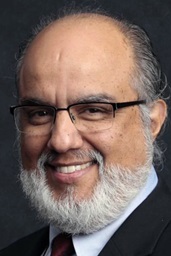Faith has become an individualized pursuit in the 21st century. A good friend has coined the phrase, “We have gone from ‘The World is Our Parish’ to ‘The Parish is Our World.’”
To sense that every moment we interact with the world around us is an opportunity to invite someone into the heart of God and fulfill the Christ-given mission of “making disciples” seems to be quite foreign to the modern United Methodist Christian.
Yet, this very basic and fundamental approach — seeing the world as our parish and seeing the individuals in that world as potential disciples — is the key to a revitalization effort that our denomination will undertake.
To put it simply, a plan without passion is no plan at all. If we can’t remember why we do what we do, then what we do is only acting out the motions to fulfill the obligations.
While I understand much of what is being called our denominational “Call to Action”and subscribe to many components of that plan, I will confess to you that there are some components that create significant “dis-ease” within me.
I remain convinced that until we motivate the people in the pew to find passion once more for the “making of disciples of Jesus Christ for the transformation of the world” on all levels of the church’s life and work, no structural change, vitality assessment or metric-reporting system will achieve our desired outcome.
This is not to say that the plan does not contain valid points that need to be discussed and implemented. They cannot, however, be seen as stand-alone solutions to the deeper problems we face.
Discussing the ‘death tsunami’
Let me use as an example the conversation about the denomination’s projected“death tsunami,”which is basedon the fact that so many of our members are advanced in age. When I first heard the presentation on the unsustainable future of The United Methodist Church, my fingers grew tired from the notes I took. I returned to my annual (regional) conference and put together a presentation to share with each of my districts. After the first presentation, three emails arrived in my inbox suggesting that a potential hole in the presentation was its lack of theological “grounding.”
Resources on restructuring proposals
- Call to Action background
- Call to Action legislation
- Apex operational assessment
- Call to Action prayer guide
- The 2012 General Conference website
Previous United Methodist News Service stories
In other words, “Tell us, Bishop, why God is calling us, both biblically and spiritually, to do anything about this problem. Convince us that this isn’t just a numbers game.” Those were great suggestions, and the presentation was altered. I felt good about the content and pleased with the initial response.
Yet, months after the presentations ended, I discovered that many were unable to make the conversion from a reality-based presentation about our impending decline to a motivation-based attempt to stir the waters with hope, purpose and creativity.
My assumption was that those who heard it would or could make the transition and use the “death tsunami” as a motivation for action. Instead, it drove many into a spiral of resignation and regret.
As a result, I framed my 2011 “State of the Church” address at annual conference around the theme, “What’s Right with the Church.” In a direct, concise manner, I attempted to tell “the rest of the story,” the story of how we can find hope, direction and revitalization in the midst of any tsunami that may hit our shores.
Leaders help ‘connect the dots’
There IS a way through. God IS NOT through with us yet.
The role of leadership is to help our people “connect the dots” in a way that many cannot do on their own. The absence of focused leadership that casts a vision and connects the present reality with the desired outcome will lead to a “free for all” of theories and practices that might not achieve the result we desire.
The Pandora’s box has opened, and there are those who want, either consciously or unconsciously, to move the conversation into more complicated and ill-advised directions. A conversation around effective leadership leads to a conversation about guaranteed appointments, which leads to a conversation about ill-equipped leaders on all levels, which leads to a conversation about hierarchical distrust, which leads to a conversation about cultural drivers that determine leadership, which leads to a conversation about congregationalism versus denominationalism, which leads to a conversation about … . Get the point?
As a bishop colleague recently wrote, “It’s like we are playing a game of ‘Angry Birds,’ casting accusations at all aspects of our institution, thinking that if we tear down this part of our church, we’ll be better off.”
While some believe that the answers to our problems will be found through various pieces of legislation passed at General Conference, the real solutions to our issues will be found when we seek more honest conversations and authentic relationships with leaders on all levels of the church’s work. More than that, we need focused leadership that will providetheological groundings, road maps of possibility and clear, concise, achievable steps for revitalization.
Any successful system needs a hierarchy, and if it does not have one, it will eventually. Our challenge is not to dismantle our hierarchical system but, rather, to find a way to allow “movements” in the midst of a hierarchical system.
We need a ‘lifestyled’ Call to Action
We don’t need a legislated call to action as much as we need a “lifestyled” call to action, one that seeps into our souls and drives us in the same way our initial call to ministry drove us into sacrificial servant leadership.
What is needed is a spiritually driven invitation to reclaim a passion for ministry that will motivate our laity to win souls for Christ as much as many of them are motivated to preserve the padded pews and stained-glass windows of their buildings.
We need literally a “come-to-Jesus” call that will motivate clergy to jump out of their boats and swim to the shore to hear with anticipation the Lord saying, “Feed my sheep” (John 24). We need this motivation to be at least strong as our motivation to be passionate about pension projections and health-care providers.
I continue to be blessed by the words of Pope John Paul II: “The church today doesn’t need more reformers. It needs more saints.” We can reform all we want, but if we don’t have saints who are living out a gospel that has seeped deeply into their souls, those reforms will have little to no impact.
*Bickerton is assigned to the Pittsburgh Area and serves on the United Methodist Commission on Communication.
Like what you're reading? Support the ministry of UM News! Your support ensures the latest denominational news, dynamic stories and informative articles will continue to connect our global community. Make a tax-deductible donation at ResourceUMC.org/GiveUMCom.




